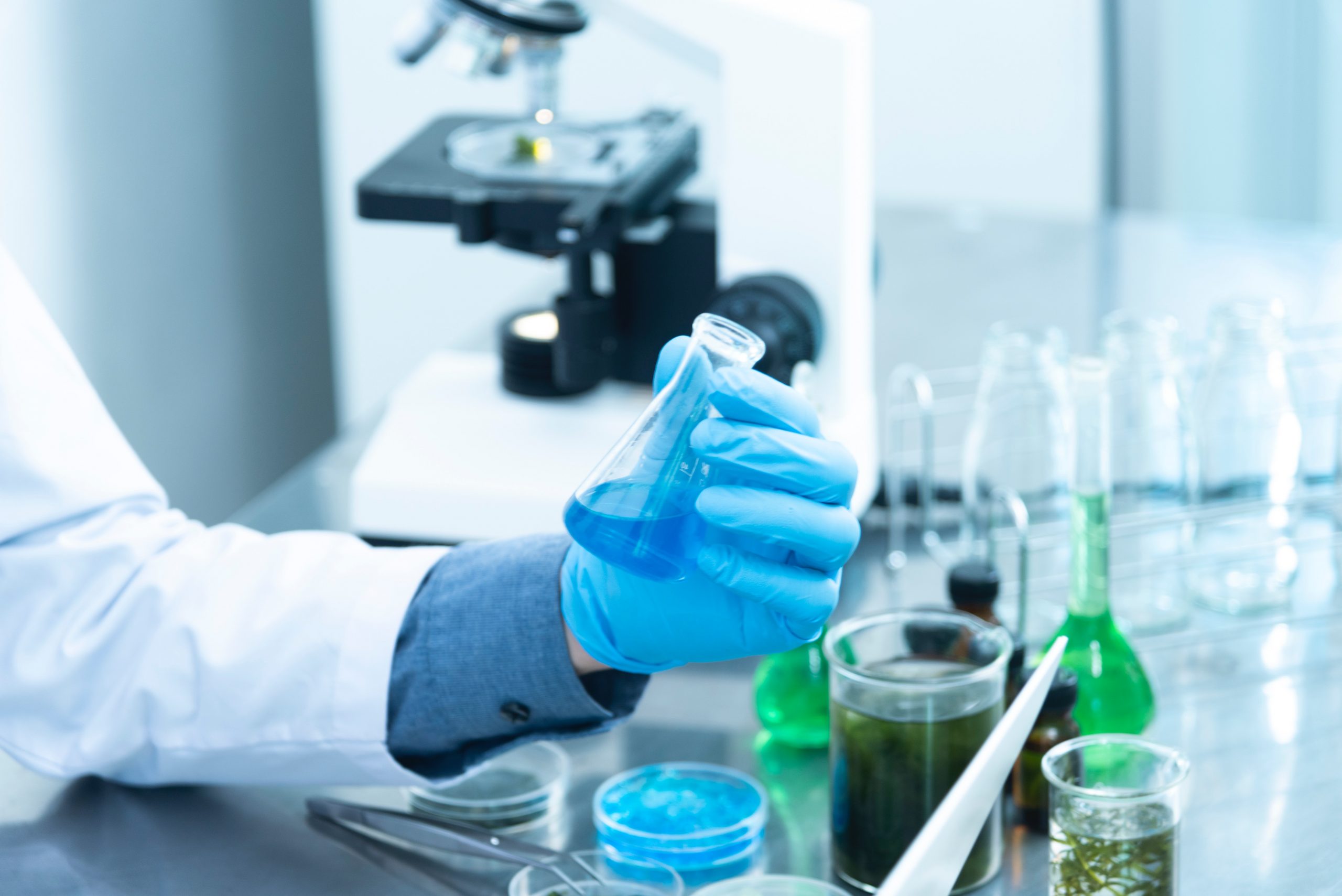
Chemical pollution is harming our health and the planet’s
Chemical pollutants are all around us – from the plastic wrapping for our food, to the cleaning products in our homes and the sofa you are sitting on. They have spread through every planetary ecosystem on Earth, from our deepest oceans to highest mountains.
They are often invisible until the devastating damage done to our bodies and ecosystems is felt, but a path to a less toxic future is possible.
The Scottish Government will be bringing in a new bill to create a circular economy in Scotland, which looks at the way we use materials to reduce the amount we need to extract from nature. Incorporating chemicals into this bill could reduce the risks we’re seeing at the moment.

The key to reducing chemical pollution is reducing consumption. Companies need to be more cautious about adding dangerous chemicals to products and take responsibility for managing their safe use and disposal.
What are chemical pollutants?
In 2022, scientists assessed the impact of chemical pollutants for the first time and found that we have exceeded planetary boundaries related to chemical pollutants. This means our bodies and ecosystems can no longer cope with the level of chemical pollutants we are pouring into them. We are essentially poisoning ourselves and the environment.

There are many forms of toxic chemical pollution. Some of the chemical pollutants which cause most concern today are listed in the table below.
Chemical pollutant | Where is it found? | What is its impact? | How to reduce exposure |
PFAS are a family of synthetic chemicals that are used to make products non-stick, waterproof and stain-resistant, also known as ‘forever’ chemicals as they do not easily break down. | Household items such as clothing, cookware, cosmetics, carpets, building materials, food packaging. There are no natural sources but PFAS are now ubiquitous in humans and natural environments, persisting in soils, air, oceans, crops, drinking water, breast milk and blood. | Toxic to both humans and wildlife, PFAS disrupt hormonal systems and have been linked to various cancers and fertility issues. They are linked to high cholesterol and immune diseases. | A few PFAS chemicals are globally regulated but they have been replaced with their chemical cousins which are potentially just as harmful. To limit exposure, producers must reduce the amount of PFAS in their products. |
Bisphenols are used as a hardening agent in plastics manufacturing and for heat-based printing. | Toys, baby bottles, linings of food cans, till receipts and tickets. Contaminated paper which may be used in food packaging. | Bisphenols are known to disrupt hormones, growth and reproduction in humans and other animals. | Look for bisphenol free products, say no to receipts or go digital. Retailers should remove bisphenols from their receipts and tickets and governments should ban their use. |
Flame retardants are added to products to make them less flammable, although the fire safety benefits are debated and risks may far outway the advantages. | Soft furniture (up to 30% of the weight of a UK sofa is flame retardant chemicals), mattresses, electronics and construction materials, plastic and fabric components of planes, trains and cars. | Accumulates in wildlife and humans. Can lead to neurological, hormonal, immune and reproductive problems. Long term exposure can lead to cancer. | The UK government should end the requirements for a flame test - the only test of its kind in the world, which is out of date and ineffective. Producers should minimise their use of chemical flame retardants and safer disposal rules are needed. |
The path to a less toxic future
Every person on earth has been exposed to toxic pollutants. However, research has shown that people who actively try to reduce their exposure can significantly lower levels of some chemical pollutants. Anna Turns, author of Go Toxic Free, says: “By arming yourself with robust knowledge that’s science based, you can become a more empowered consumer”.
Taking personal action is one way to improve your exposure to chemicals but many pollutants cannot be easily avoided by consumers. The companies causing contamination need to take responsibility for the use of chemicals in their products. Two of the largest chemical production sites in Scotland, Mossmoran and Grangemouth, have been found to have very poor chemical compliance by SEPA.

Reducing the use of chemicals in products and the products they are found in, such as plastic packaging, is the surest way to reduce our exposure long term. Chemical production is energy and carbon-intensive, so reducing production can curb carbon emissions too.
Creating a circular economy, where we consume less, is key to reducing chemical pollution long term. The path to more circular use of materials is the same, whether a material is a visible part or our economy or less visible, like many chemicals. It requires using less resources to make fewer products, careful consideration about what chemicals are added to products and clearer labelling for consumers.
Safer disposal is also vital – recycling contaminated plastic may be increasing chemical exposure. The funds from Scotland’s Deposit Return Scheme, which begins next year, could be used to manage chemical waste from plastic bottles and metal cans.
What are the next steps?
The Scottish Government is drafting legislation to create a circular economy in Scotland. This needs to include principles of sustainable use of chemicals alongside other materials.
Not only do chemical pollutants need to be limited in and of themselves, they can disrupt a circular economy approach if they’re ignored.
For example, if toxic chemicals are embedded in products that are then recycled, those chemicals can be dispersed into many new products and the environment, spreading their toxic pollution far beyond the original source.
The EU’s REACH programme is the most comprehensive legislation for managing chemical pollution in the world. It’s successful because it considers whole classes of chemicals, rather than one at a time which would be far too slow. We need to see Scotland keeping in line with this approach.
Learn more about chemical pollution
If you are interested in learning more about chemical pollution, here are some resources on what chemical pollution is, how to reduce your exposure and the campaigners working towards a toxic-free future for us all:
- Our Stolen Future by Theo Colborn, Dianne Dumanoski and John Peterson Myers. First published in 1996, this is the chemical pollution answer to Rachel Carsen’s Silent Spring. This book documents the mounting evidence around endocrine disruption compounds, where they come from, the ubiquitous presence in our lives and how they are jeopardising our health, our fertility and our future.
- Go Toxic Free by Anna Turns. A practical beginners guide to chemical pollution and how to reduce their impacts on your life, and how a circular economy for chemicals can reduce chemical pollution for us all.
- Fidra is a Scottish charity which campaigns for more sustainable societies and healthier ecosystems by reducing plastic pollution. They raise awareness of the dangers of chemical pollution, and promote circular economy solutions, such as their 12 key asks for the UK chemical strategy.
- Break Free From Plastics is a global movement which works towards a plastic free future. Their activist networks raise awareness of the chemical pollution created by plastics and advocate circular solutions.
